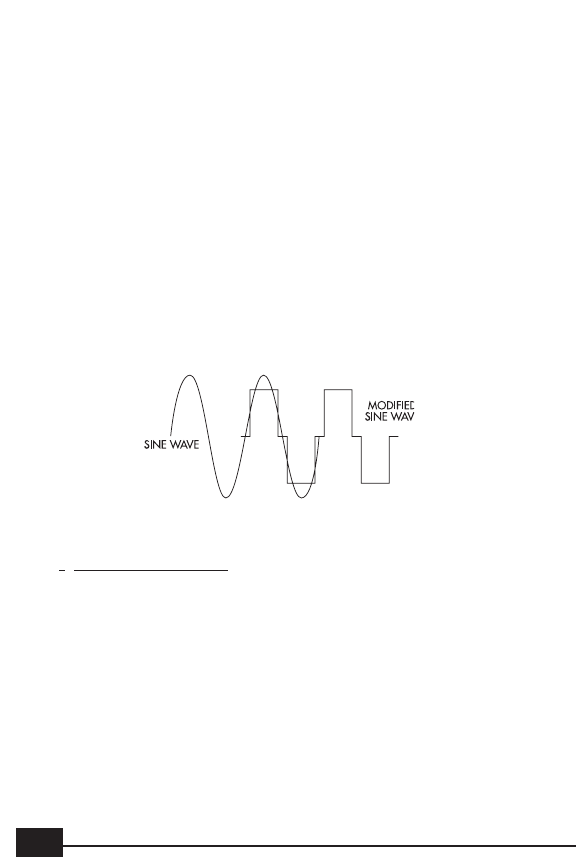
3.2 THE POWER INVERTER OUTPUT WAVEFORM
The AC output waveform of the POWER INVERTER is known as “modified
sine wave”. It is a waveform that has characteristics similar to the sine wave
shape of utility power. This type of waveform is suitable for most AC loads,
including linear and switching power supplies used in electronic
equipment, transformers, and motors.
The modified sine wave produced by the POWER INVERTER has an RMS
(root mean square) voltage of 110 volts, which is the same as standard
household power. Most AC voltmeters (both digital and analog) are
sensitive to the average value of the waveform rather than the RMS value.
They are calibrated for RMS voltage under the assumption that the
waveform measured will be a pure sine wave. These meters will not read
the RMS voltage of a modified sine wave correctly. They will read about 20
to 30 volts low when measuring the output of the inverter. For accurate
measurement of the output voltage of this unit, use a true RMS reading
voltmeter such as a Fluke 87, Fluke 8060A, Fluke 77/99 series, Beckman
4410, or Triplett 4200.
FIGURE 4
Modified Sine Wave and Sine Wave Comparison
4. INSTALLATION
4.1 POWER SOURCE REQUIREMENTS
The power source must provide between 11 and 14.5 volts DC and must
be able to supply the necessary current to operate the load. The power
source may be a battery or a well-regulated DC power supply. To obtain a
rough estimate of the current (in amperes) the power source must deliver,
simply divide the power consumption of the load (in watts AC) by 10.
Example: If a load is rated at 750 watts AC, the power source must be able
to deliver: 750 divided by 10 = 75 amperes
6
6
110/120V AC
110/120V A


















